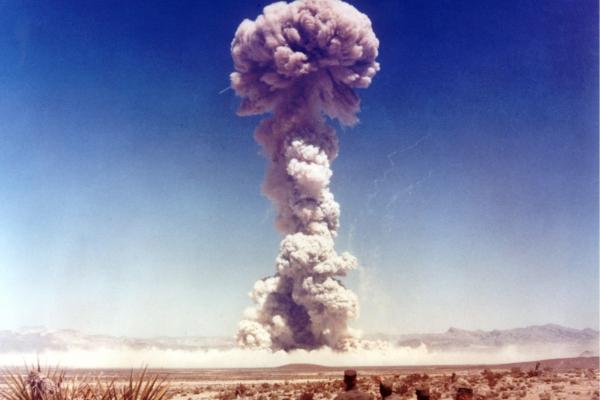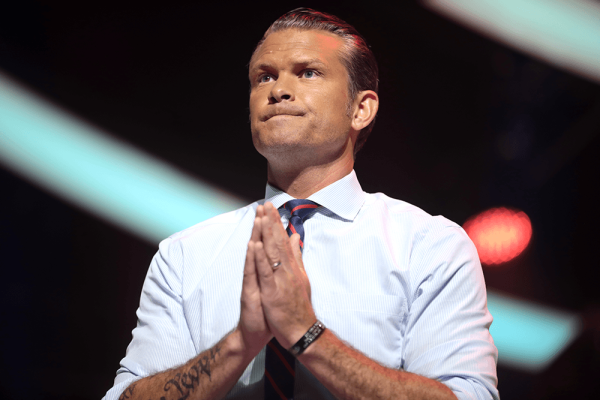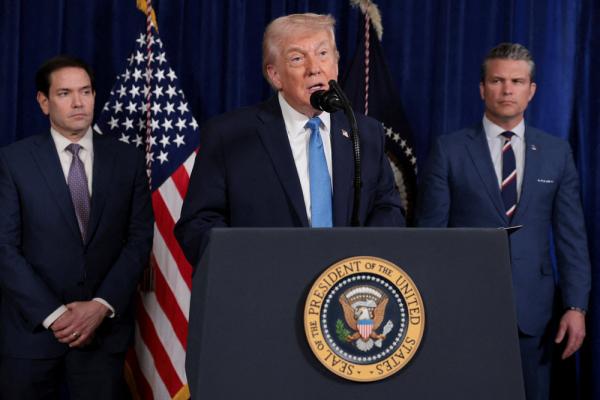According to a new NPR/Ipsos poll released this week, only 24 percent of Americans surveyed realize that the president can order a nuclear strike on his own authority. Most — incorrectly — believe the president must consult Congress first.
"A large majority of Americans, three-quarters, think that there is some sort of check — that either he has to get approval from Congress or he has to coordinate with the secretary of defense or he has to get confirmation from the Joint Chiefs," said Ipsos Vice President Chris Jackson.
"A lot of people don't seem to really get it, just how easy it is procedurally to order a nuclear attack.”
While North Korea threatens to grab nuclear attention, generations of Americans have been denied knowledge of our own nuclear weapons architecture. As a result, we don’t fully understand the magnitude of risks involved in a nuclear strike.
Since World War II and the Japanese attack on Pearl Harbor, Americans have given the president unilateral authority to launch nuclear missiles. This is an anomaly. At all other levels of the nuclear chain of command, the “rule of two” is strictly applied.
“It always requires two people, two separate actions, to launch, steal, sabotage, or tinker with an atomic warhead,” Peter Zimmerman, nuclear physicist and State Department consultant wrote at USA Today. “This is the inviolable two-person rule intended to prevent misuse of a nuclear weapon. It has been that way since the bomb that destroyed Hiroshima was loaded into the Enola Gay to force an end to World War II.”
Yet, at the top of the nuclear pyramid, where it matters the most, this rule falls down.
“Only one person need act in order to launch all American nuclear weapons,” Zimmerman wrote. “The president. There is no two-person rule for ordering a strike. Nobody except the president needs to agree; nobody in the chain from president to launch officer has authority to question the order. If the president orders a launch, the system executes it. The service members involved may have their doubts, but years of military training have conditioned them that even this order must be obeyed.”
North Korea’s leader Kim Jong-un has raised the nuclear stakes this summer — contributing to a dangerous and destabilizing military situation in the Pacific. President Donald Trump has added rhetorical fire to the already existing “military exercise” response that has long been part of the U.S. reaction and was amplified under the Obama administration’s “pivot to the Pacific.”
In August, the Korean Catholic bishops harshly criticized North Korea’s nuclear provocations:
North Korea’s nuclear test is clearly a violation of United Nations Security Council Resolutions. It is also an act of threat to peace in Northeast Asia, inciting the neighboring countries of Korea to nuclear armament. The Catholic Church in Korea strongly denounces North Korea’s recent provocations, and rejects all movements which escalate tensions, and undermine peace on the Korean Peninsula.
The U.S. Catholic bishops supported their Korean counterparts. In a letter to Secretary of State Rex Tillerson in August, they wrote:
The Catholic Church has long placed nuclear proliferation and warfare among the greatest threats to international security and peace. American efforts to halt the spread and use of these weapons is laudable. While the escalating threat of violence from the North Korean regime cannot be underestimated or ignored, the high certainty of catastrophic death and destruction from any military action must prompt the United States to work with others in the international community for a diplomatic and political solution based on dialogue. This crisis reminds us that nuclear deterrence and mutually assured destruction do not ensure security or peace.
It is time for American Christians to provide strong leadership toward nuclear de-escalation. A small but significant first step would be to bring the two-person rule to the top of the nuclear pyramid.
Got something to say about what you're reading? We value your feedback!






